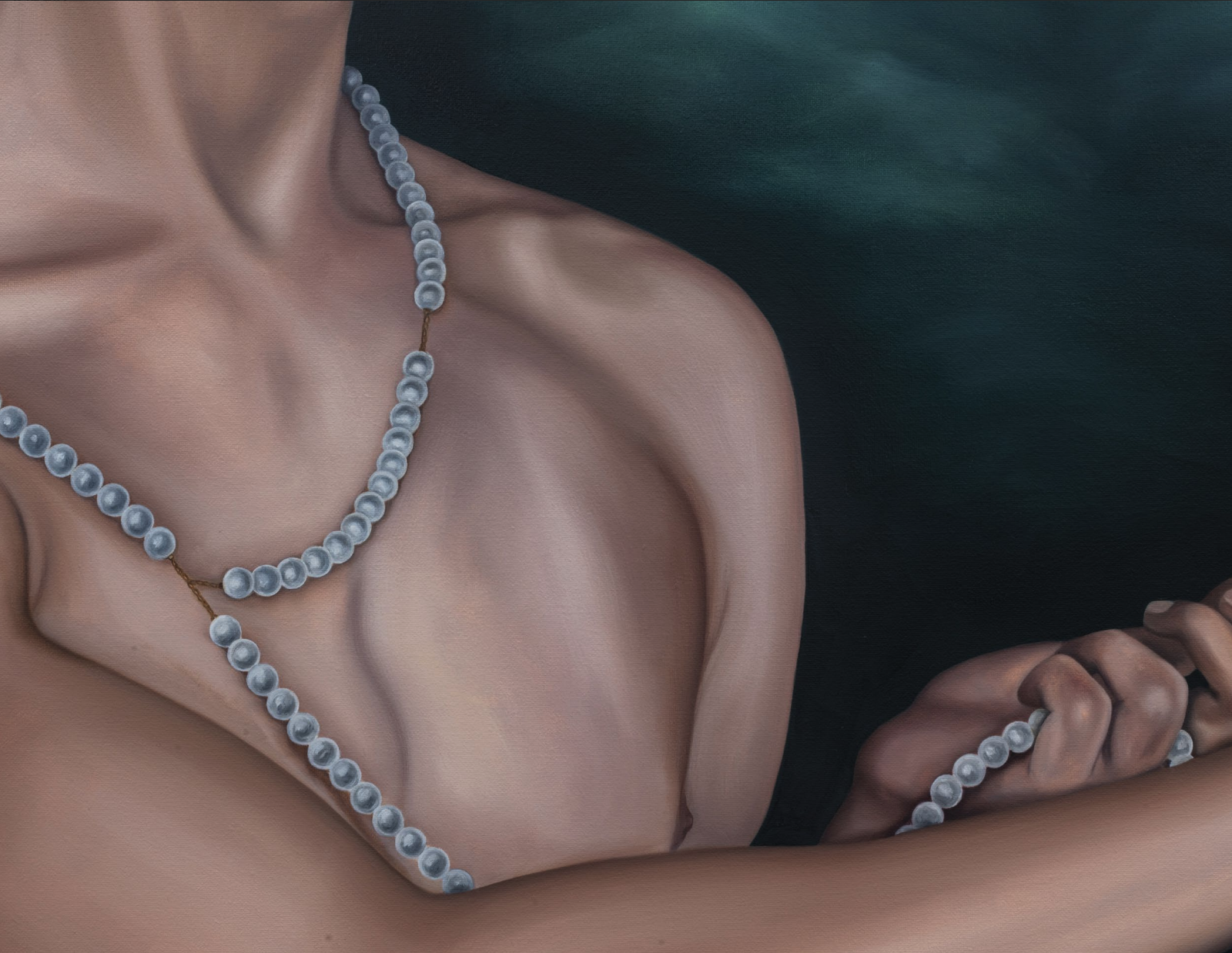In her third exhibition with COMA Gallery, New Zealand born artist Kansas Smeaton offers a compelling take on femininity, Carl Jung, and the natural world.
On view from 20 June until 19 July, Kansas Smeaton‘s I Am You and You Are Me is motivated by ancient Greek mythology, nocturnal symbolism, and Jungian psychology. A series of Rococo-style oil on canvas works that address themes like womanhood, social structures, the human psyche and hidden traits, vulnerability, beauty and instinct, what initially presents as a straightforward body of work ultimately portrays an engaging, provocative artistic vision.
Smeaton’s previous exhibitions with COMA have addressed notions of power and symbolism while utilising Rococo for both aesthetic and more nuanced purposes. Her newest exhibition seeks to bring these together to explore three key inspirations: Artemis, greek goddess of the hunt, wilderness, animals and the moon and a protector of young girls; Carl Jung’s theory of archetypes, primarily the notion of the “self” (an individual’s entire personality), the “shadow” (the part of an individual’s personality they hide or repress) and the “persona” (the person an individual portrays themselves as), and nocturnal symbolism. Such inspirations occasionally operate simultaneously in the same work.
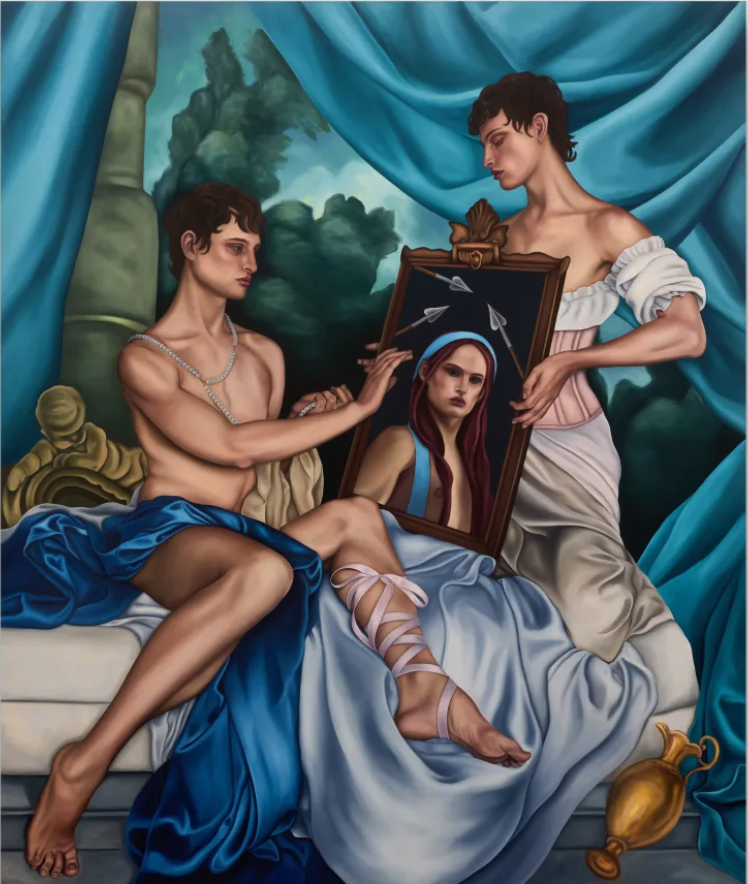
Most prominent among Smeaton’s pieces is Persona. A grand and imposing painting, it depicts three figures to explicitly represent Jung’s archetype theory. Notions of Ancient Greece are clear through the composition of the work, and the misty treetops in the foreground can evoke the ambiguity Smeaton aims for. Smeaton’s decision to frame a female subject within a portrait frame obviously speaks to themes of womanhood and social structures. As it is the first painting visitors to COMA’s Marrickville space will see, it sets the tone well.
Bird on the wire is Smeaton’s most thorough exploration of Artemis. In contrast to traditional depictions of the Greek goddess, the figure here is feminine in a more modern way, without the traditional expectations associated with the gender. The subject is stoic but not necessarily deific; they are instead stripped-back, more vulnerable, in a manner that more strongly captures power and departs from antiquity. This power seems more authentic and self-given. Indeed, to depict a swan pierced by an arrow is to make this departure from antiquity further concrete.
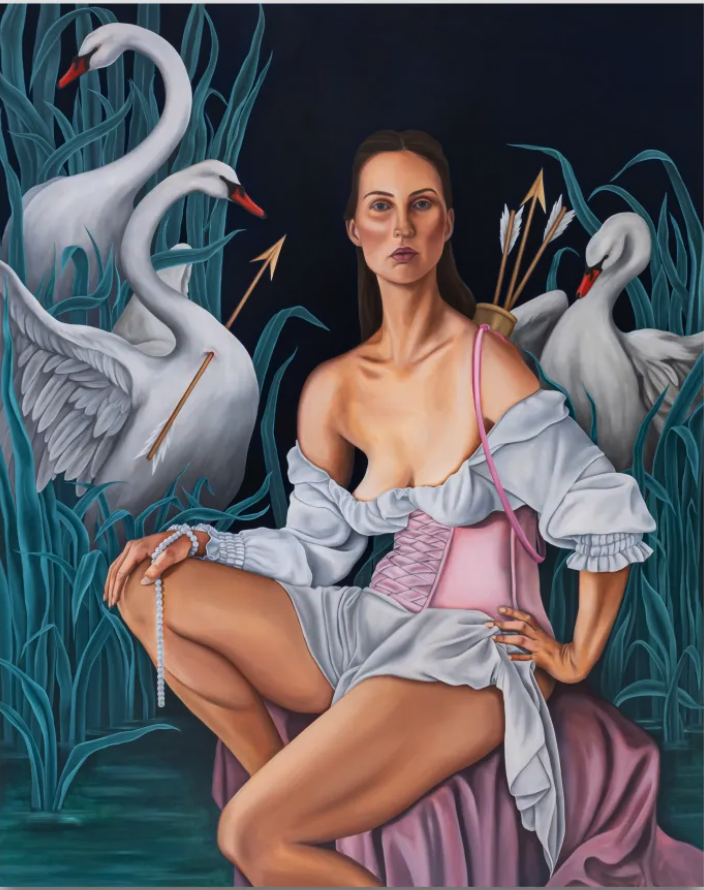
Someday eat you too focuses on moths, spectral companions to Artemis. Their opposing colours are striking and anatomy detailed but perhaps more important is their framing. So close to each other, Jung’s psychology can be inserted – the moths can be seen as an indication that the “self” and the “shadow” are not dichotomous but dyadic. Yet, separated by negative space across the centre of the canvas, they are isolated.The vectors employed suggest a connection with or longing for the other, which one would hope is later realised.
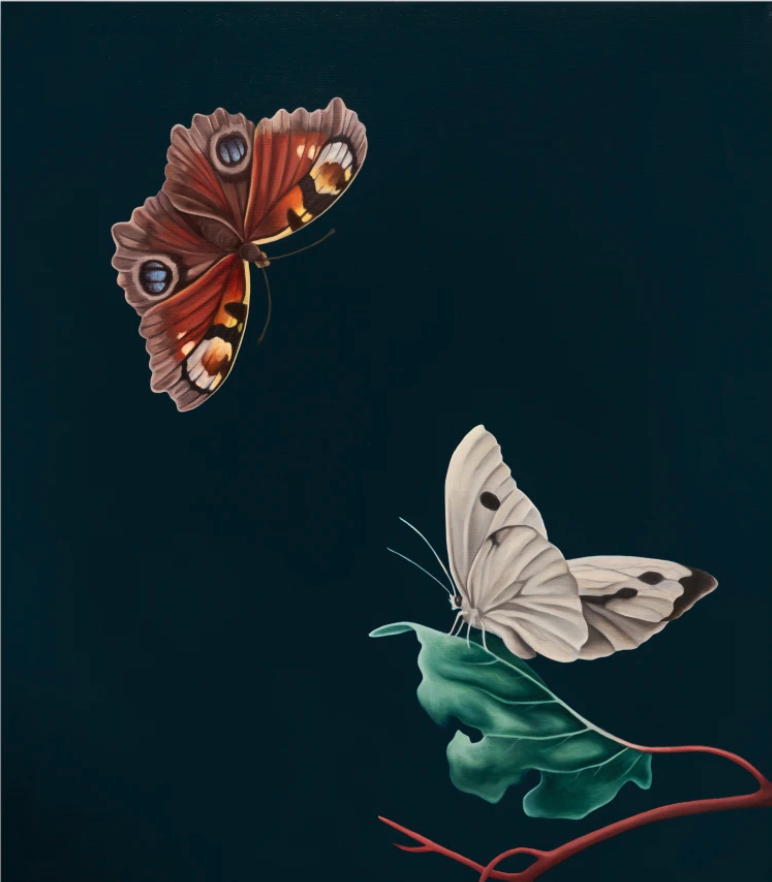
Other works in the show have a different impact. Return to Eden is confrontational. Not as intricate as the smaller works on show but just as large as Persona, the work plays on a notion of containment-meets-chaos. The nude subject appears contained, and indeed contains themselves physically. Their brash nudity brings out a chaotic, or at least shocked, reaction from a viewer. One could see the beauty of the subject or delve into the psychology behind the viewer’s instinctual response. In another sense though, it may be simpler to see the value in the piece as more akin to shock value.
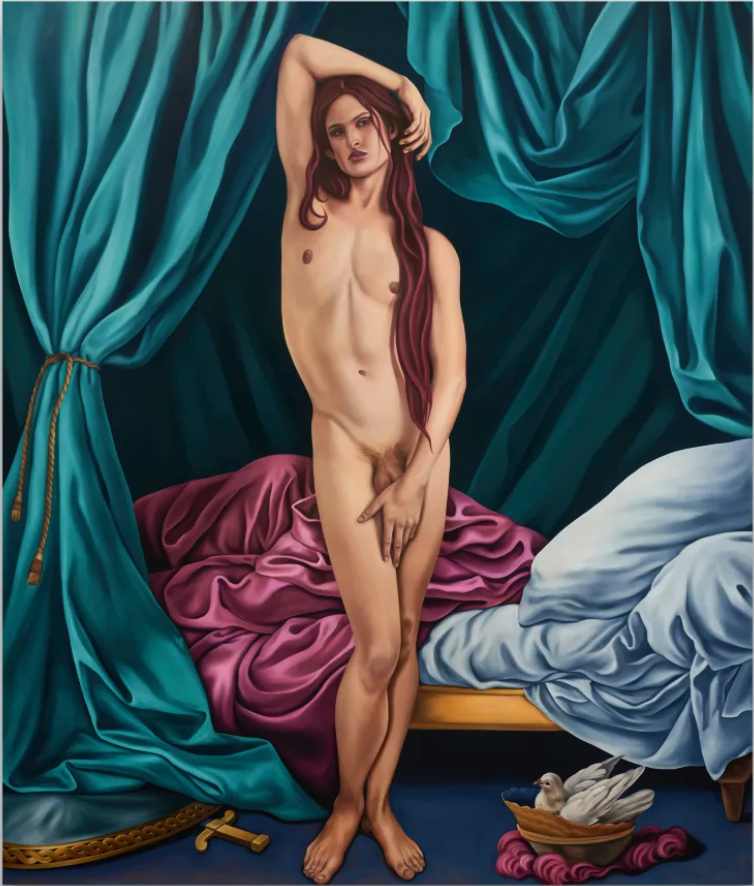
Return to Eden, as well as The tangled wood echoes and The Unity of Opposites, are more limited works in the exhibition. The first two pieces have the opportunity to be more detailed, yet they are not. There could be more elements to each; by not including more, they do not lean in to the exhibition’s thematic foundations as deeply or engagingly as both could. This could be due to the way Rococo has been realised, but it feels more like a combination of different factors. The Unity of Opposites also feels thematically short-changed. Jung’s archetype theory and nocturnal symbolism are both present in the pieces but in a soewhat face-value fashion. This piece is also not as nuanced or interesting as others on display, which is a rather unfortunate shortcoming.
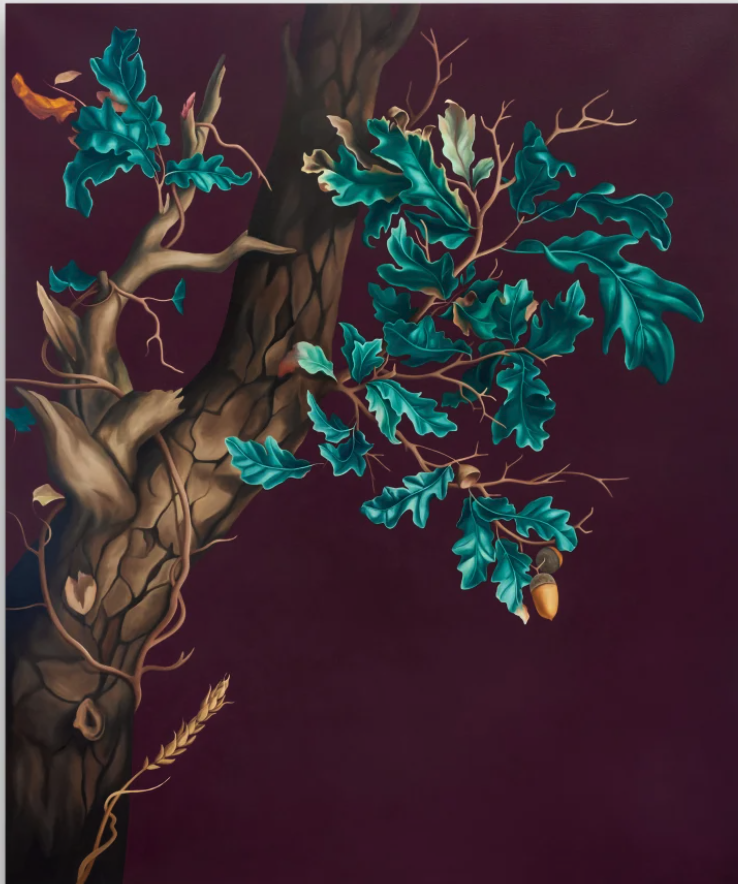
Nonetheless, I Am You and You Are Me enthrallingly channels Smeaton’s vision. Despite some inconsistency there is a lot on offer to engage with. With the exhibition running for a month, it is well worth your time to see it.
I Am You and You Are Me is on show at COMA Gallery, located at 37 Chapel Street, Marrickville, from 20 June to 19 July. More information is available at the link here.
